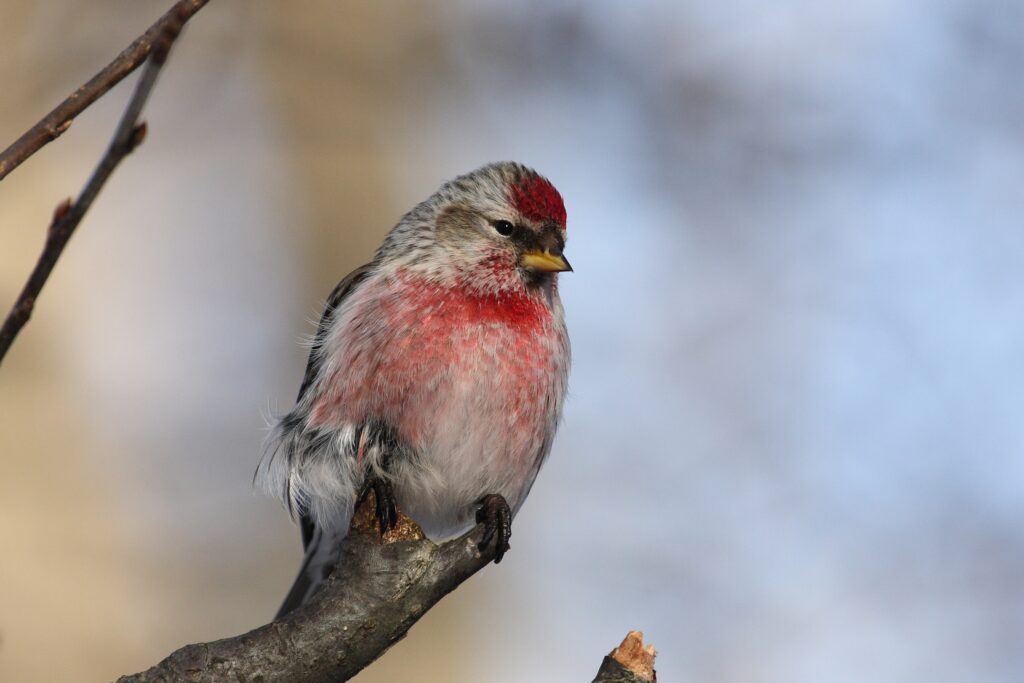Well, election season is upon us and poll takers abound, asking questions about people’s political leanings. The word “poll” arose around 1300 from the word polle, meaning head or top. Later its meaning extended to individuals, like people or sheep. By 1620 it meant the counting of heads or votes, as in an election. By 1902 it meant a survey of public opinion as it does today.

That’s why the Common Redpoll is called such – it has a red head. Common Redpolls are industrious, spending much of their time flitting about, feeding, and calling. A very small finch in the family Fringillidae, it has the typical conical, pointed bill. Its crown is bright red and the chin and lores black; the upperparts are dark with broad pale-whitish or buff-white edges in fresh fall plumage, wearing through spring until summer, when upperparts become very dark. The sexes are similar but the female is generally darker and streakier, with little or no red in plumage except on crown.
Native to North America, the Common Redpoll breeds in the very far north, even up to Greenland and winters in the southern Canadian provinces and the northern edges of northern states in the U.S. They are permanent residents in parts of Alaska and the Yukon and Newfoundland/Labrador.
While Common Redpolls can be scarce some years, the Hoary (or Arctic) Redpoll is even scarcer. Hoary Redpolls look very similar to Common Redpolls and the species often flock together, although the Hoary Redpoll range is more restricted both north and south. They look so much alike that there has been discussion about lumping them into one species. One difference is the streaking on the chest. Common Redpolls are darker overall and have chest streaking that is more defined than in Hoary Redpolls. (Hoary refers to anything that is old or that has the whitened look of age as Hoary Redpolls are). Common Redpolls also have bold streaking on the flanks, rump and undertail coverts, absent or subtle in Hoary Redpolls. For a detailed discussion on redpoll taxonomy check out the Finch Research Network. There is a third species, the Lesser Redpoll, of the UK and continental Europe, whose taxonomy is also argued over.

A few northern species of birds undergo irruptions, that is, movements of many birds southward in response to a food shortage. Grosbeaks, redpolls, crossbills, and nuthatches are known for this behavior. Irruptions are cyclical and occur every few years such as happened in the winter of 2021 and 2022 in Ontario and Illinois and other states and provinces.
No one is sure exactly what causes irruptions but a major cause is “masting”, the irregular synchronous production of large seed crops in in which the majority of trees in an area produce heavy seed crops in certain years (the mast years) while in other years the crop is small or nonexistent. This may cause the birds to follow the abundant seed crop.
Masting is a strategy used by some trees and shrubs to flood the environment with so many seeds that predators can’t eat them all, insuring the germination of new plants. And it happens irregularly so that predators can’t evolve their own strategy to take advantage of the profusion of food.
Your post about redpolls got me thinking about the lesser variety in Europe and then wilder thoughts. If sheep without horns are called polled, then we are polled humans by contrast with mythological fauns/ satyrs